Deep-sea organisms research oriented by deep-sea technologies development
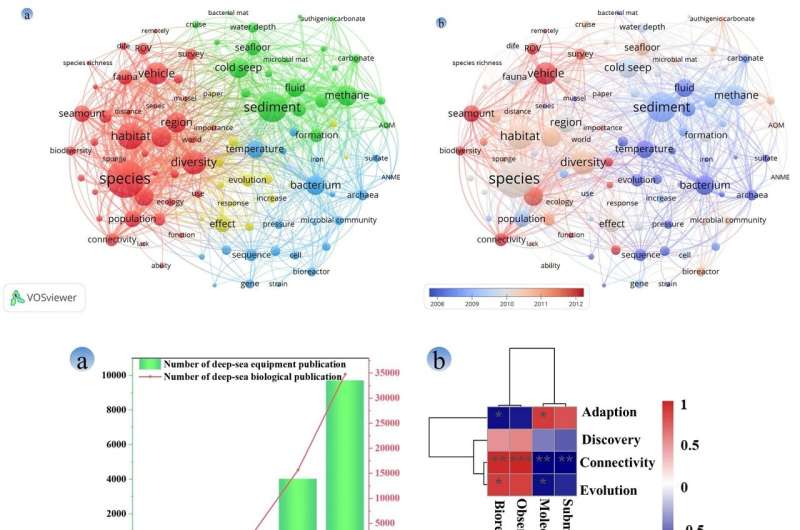
The deep sea has been documented as the largest biome on earth. Typical deep-sea ecosystems such as hydrothermal vents, cold seeps, seamounts, oceanic trenches, and whale falls, shatter our early understanding of the deep sea as a "no-go area" for life.
However, the difficulty of deep-sea access has limited human insight into the unique environment characterized by high pressure, high/low temperature, limited light, and nutrient scarcity in the deep sea. So far, less than 0.0001% of the whole deep-sea ecosystem has been visually observed or physically sampled.
In-depth understanding of biodiversity, function, and service of the deep-sea ecosystem, and the impact by anthropologic activity are far from well known. Thus, it is critical to develop technologies that can obtain deep-sea organisms, observe ecosystem development, and record interactions with environmental changes.
A recent study led by Prof. Si Zhang (Southern Marine Science and Engineering Guangdong Laboratory) created a bibliometric analysis over the past five decades which showed that there was a strong interrelation between the types of deep-sea equipment and the research hotspots for deep-sea organisms. The research of deep-sea organisms is gradually shifting from identifying species and environmental characteristics to exploring ecosystems and connectivity.
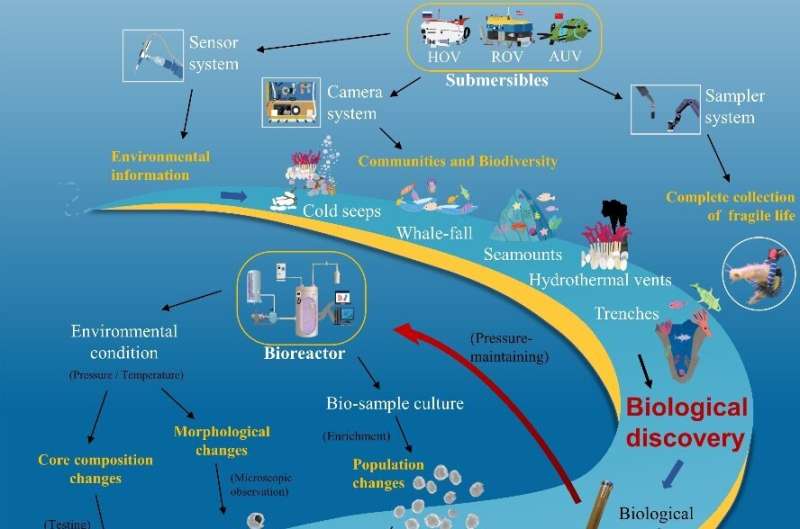
Research achievements are closely in line with the developing technologies. Deep-sea submersibles, microbial bioreactors, seafloor observatories, and molecular biology methods have promoted the discovery of new species in the deep sea, bringing new opportunities to study the adaptability of deep-sea organisms to extreme environments, as well as biological connectivity. These technologies can assist in achieving the controlled culture of deep-sea organisms with specific ecological service functions, providing a new window for exploiting high-value deep-sea biological resources.
Innovating deep-sea equipment performance is essential to break through the bottleneck of deep-sea organism research. In the future, advanced and specialized equipment that meets the requirements of deep-sea organism research must be developed for exploring, surveying, observing, sampling, experimenting, and conducting models in the deep-sea floor environment. Different perspectives of research on the biology of deep pelagic and benthic ecosystems should be considered as well. The main areas of innovation are as follows:
- Improving the ability to explore deeper, wider, and longer-term deep-sea ecosystems
- Developing large-scale in-situ conditions-retaining simulators
- Enhancing the self-adaption ability of the deep-sea environment
-
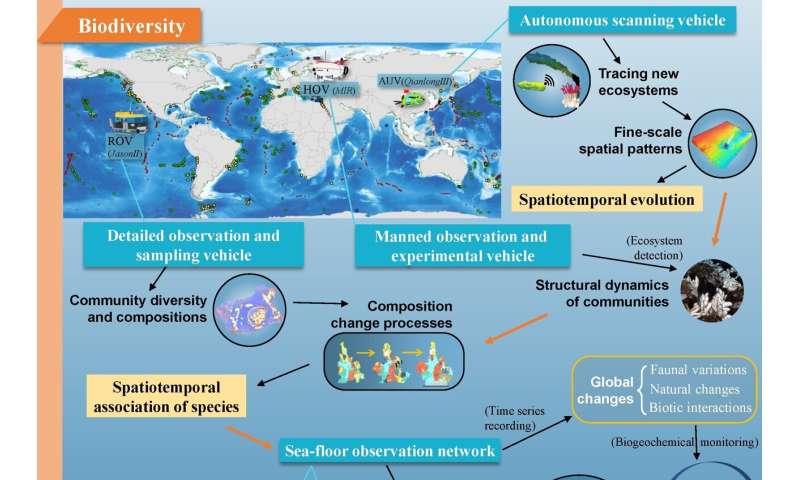
The observation technology continues to mature and improve, and its effective methods for investigating the biodiversity of deep-sea organisms have been systematically applied in a comprehensive manner. In order to fully understand the changes and connectivity between ecosystems, it is a better choice to establish a long-term continuous observatory. Credit: Science China Press -
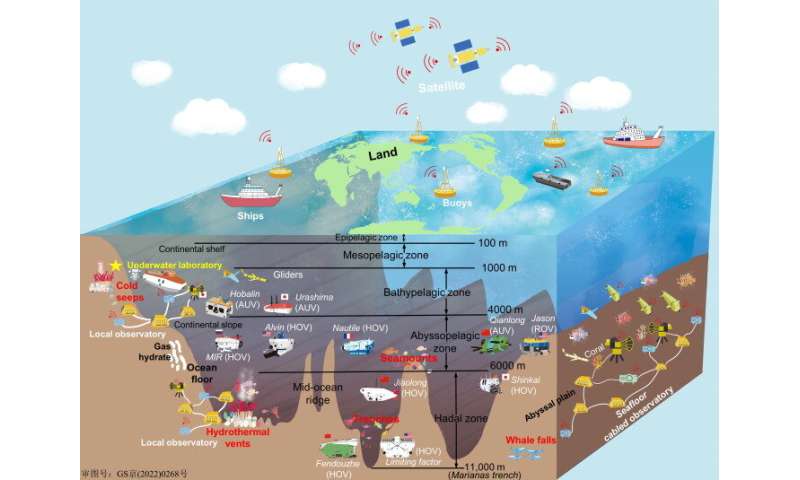
The working range of the serving submersibles is developing toward deeper and wider. The research team is working on building a long-term underwater laboratory that can carry three scientists and multiple devices into the deep-sea cold seep ecosystem for long periods of time to conduct multiple in-situ experiments and long-term investigations (marked with a golden star). Credit: Science China Press -
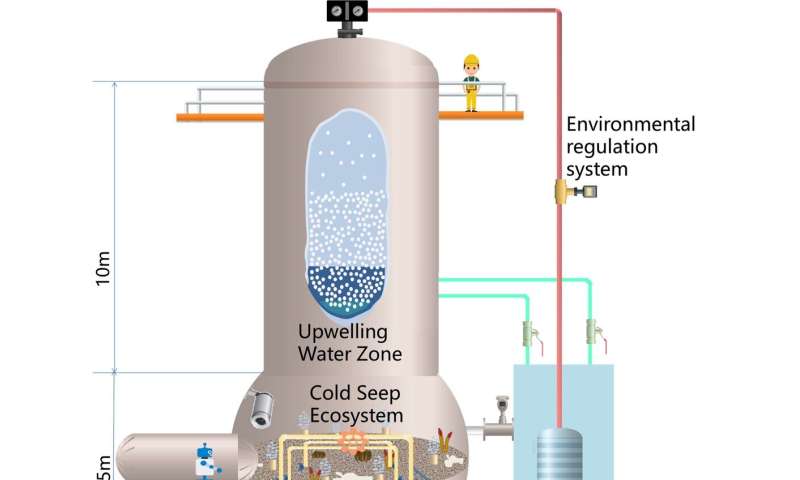
The team is building a long-period and large-scale simulator to create an artificial ecosystem of deep-sea cold seep. Credit: ©Science China Press
The research team is working on building a long-term underwater laboratory that can carry three scientists and multiple devices into the deep-sea cold seep ecosystem for long periods of time to conduct multiple in-situ experiments and long-term investigations. Also, the team is building a long-period and large-scale simulator to create an artificial ecosystem of deep-sea cold seep.
The research was published in Science Bulletin.
More information: Jing-Chun Feng et al, Deep-sea organisms research oriented by deep-sea technologies development, Science Bulletin (2022). DOI: 10.1016/j.scib.2022.07.016
Provided by Science China Press




















